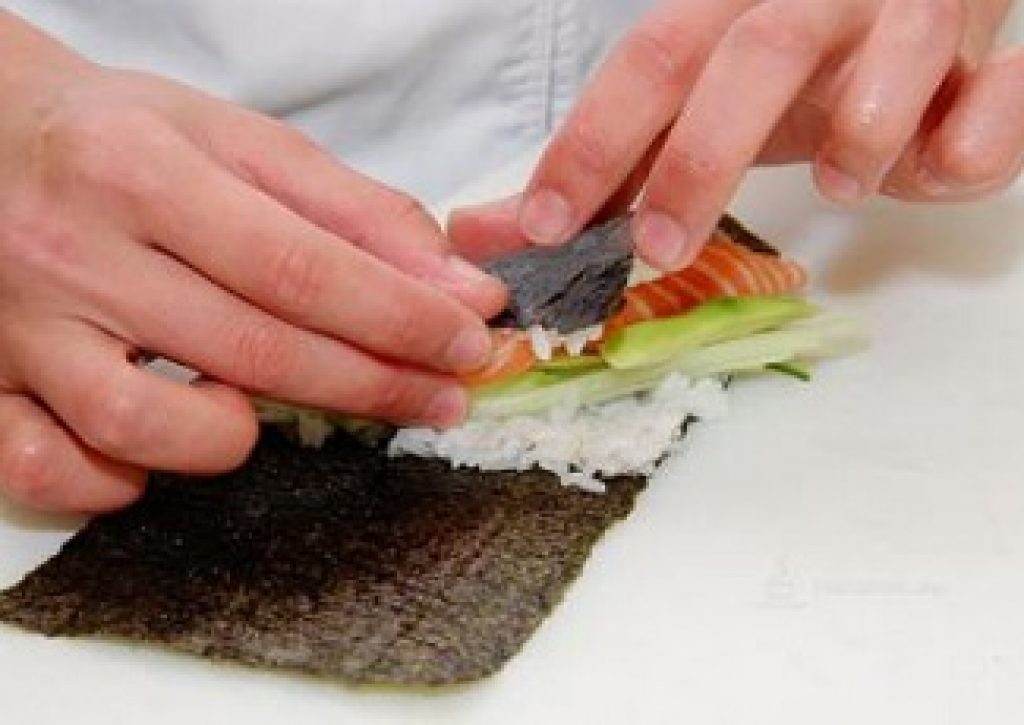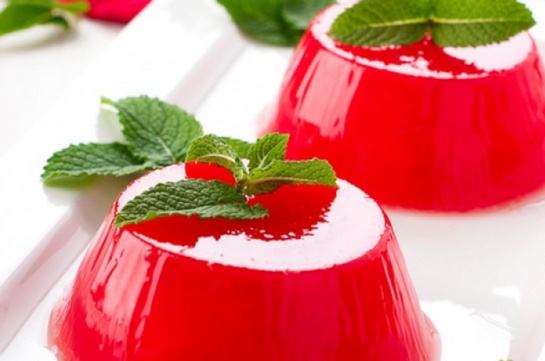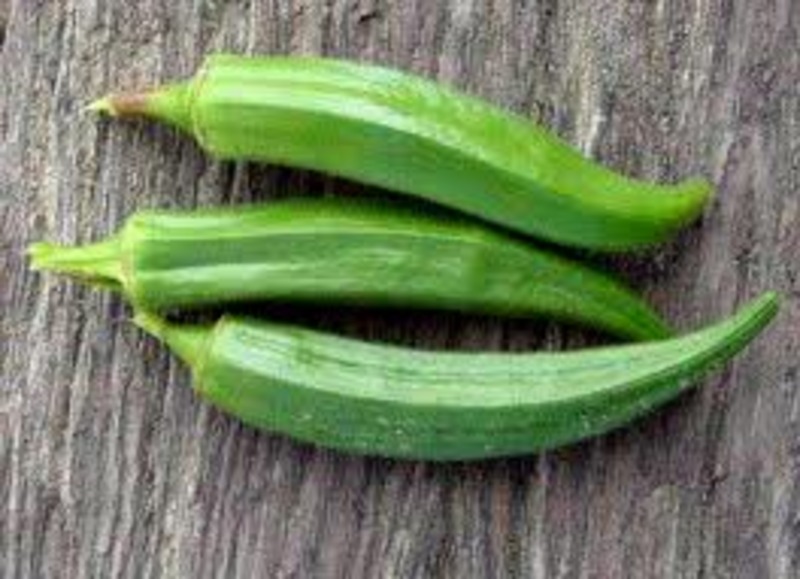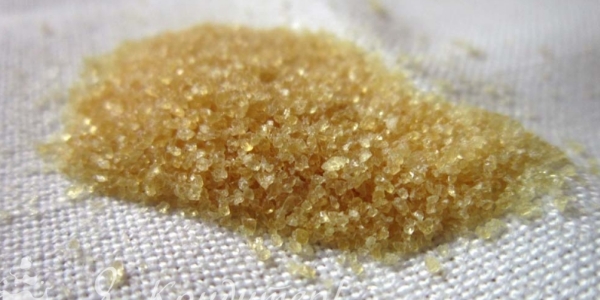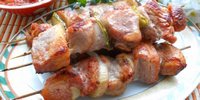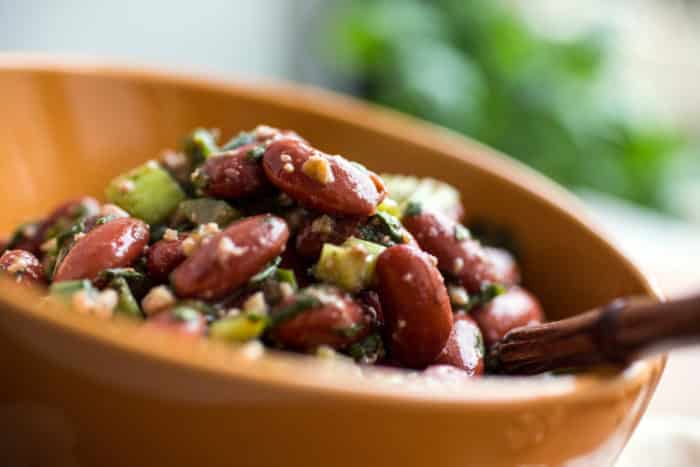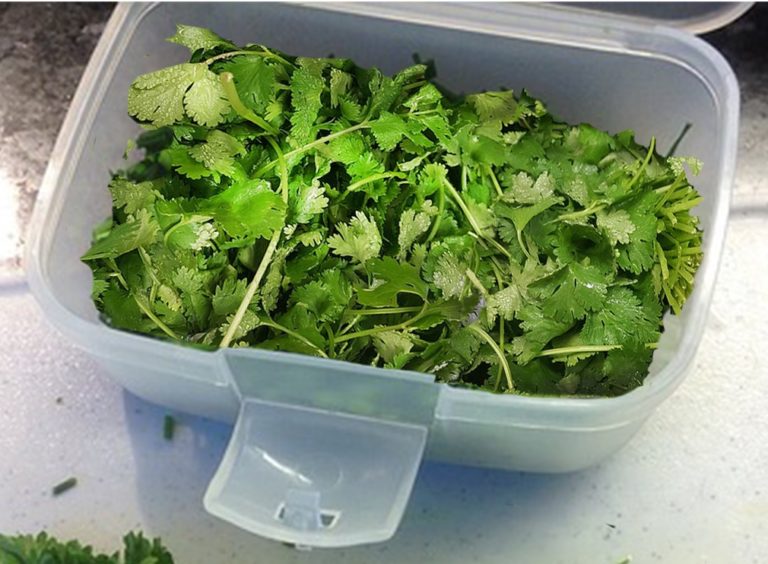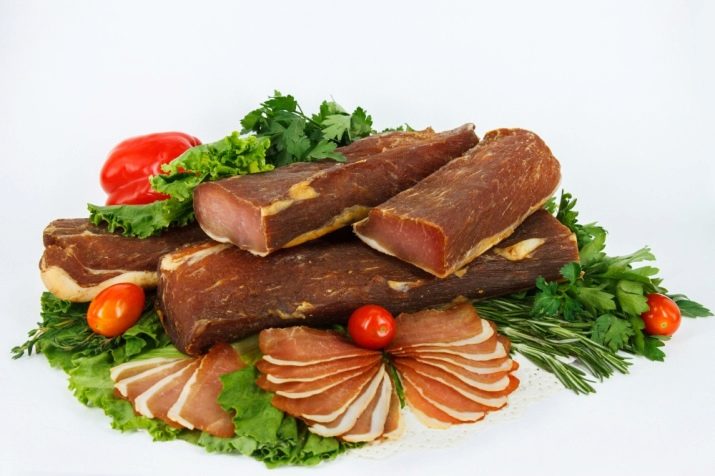How to measure grams of flour without. We measure without weighing
Often, the correct proportions must be observed in cooking. This is true for those who follow a diet when the diet is written in grams. The best option is to use a kitchen scale, but they are not always present at home. Then the question arises: How to weigh products without weights?
History of weights
The history of the origin of scales goes back to ancient times. As the story tells, they first appeared in the 5th millennium BC. in Mesopotamia. Scientists suggest that initially people weighed the goods on hand, but gradually began to look for new ways. As a result, the first measuring system appeared - a wooden beam, to the ends of which bowls were attached. In one bowl, the goods to be weighed are weighted, and in another unit of measure, the standard. Often, grain served as a weight standard.

In ancient India, the task arose - how to weigh an elephant? That's what the ancestors thought of. They placed the elephant in the boat and noted the water level to which it plunged. After that, instead of an elephant, the boat began to be filled with stones. When she plunged to the desired depth, the stones were dragged onto land and began to be measured using available methods - the same wooden beam.
How to measure the weight of products without weights
To weigh the products yourself at home, you need to use household utensils: glasses, measuring spoons, mugs, pans, jars. Almost all measurements at home can be carried out using these items.
The standard volumes of home measuring items are as follows: faceted glass - 250 ml, tablespoon - 20 ml, tea - 5 ml.

In addition, there is a very simple and time-tested method of weighing kg. product. You will need 2 pots of different sizes and 1 kg of sugar. Put a load (sugar) in a smaller pan. Put one pan in another. It is important that one pan fits completely in the second. Pour water into a large pot so that it reaches the edges of another. Thus, you mark the water level, indicating the mass of one kilogram. Instead of sugar, you can use any other product, and in order not to make a mistake with the weight, monitor the water level.
There are certain subtleties in weighing different types of products of different consistencies.
When weighing liquids (milk, butter, kefir), measuring cups and spoons should be poured to the brim. Products of viscous (condensed milk, jam) or dry (sugar, flour, cereals) consistency must be filled with a full false or a glass with a "slide".
Bulk products can not be sifted or tamped, otherwise the wrong result.

How to weigh products without weights
Many people like to cook and experiment in the process, “by eye” add the necessary products to dishes. As a result, the best dishes are born. But sometimes without exact observance of the recipe, nothing will work. To get a confectionery "masterpiece", you must follow the instructions and measure the products to a gram. First of all, this approach relates to baking. Let's look at how to measure the main foods that make up sugary foods.

How to weigh flour without scales?
Adding too much flour to a dish can ruin it completely. Therefore, it is so important to correctly measure the right amount of flour.
This can be done with the help of spoons or a glass, as most housewives do. Keep in mind that flour must be weighed in its pure form without sifting. You cannot tamp it in a glass.\u003e You can measure the right amount of flour with a spoon. Scoop the flour, shake a little from the spoon, so that a small “slide” remains. If you measure with a teaspoon, then 10 grams comes out, in the dining room - 25 grams, in a glass - 180 grams of flour.
To the question: How to weigh sugar without weights? The answer is on the same principle. In a teaspoon with a “slide” contains 9 grams, in the dining room - 24 grams, in a faceted glass filled to the brim - 200 grams of sugar.
If honey is part of the comb, the question arises: How to weigh honey without scales at home? After all, this is not a loose product. Honey is a viscous fluid. But the measurement system remains the same, the tanks need to be filled to the brim, preferably with a slide. 325 g honey is included in a faceted glass, 35 g in a tablespoon, and 12 grams in a teaspoon.

The nuances and subtleties of weighing
For those who strictly monitor their diet, it is extremely important to measure portions in grams. And this applies to absolutely any dish. Few people know in which order it is necessary to weigh all the components. Below we will reveal some secrets:
- Cereals need to be measured only in a dry form. If you do this by washing them or after soaking in water, the mass will change greatly. By the same principle, pasta is weighed.
- To eat a “healthy” piece of meat, you need to remove the skin and cut off excess fat. You can also act with fruits - peel them from the skin, cut them, and only then weigh them. As a result, you weigh exactly what you are going to eat.
- Fish and meat must be weighed unwashed. Otherwise, excess liquid will be present during weighing.
- When preparing a complex dish - first cut all the ingredients, and then weigh.
Table - how to weigh without weights
An indispensable table of product weights is available to help all keen on cooking.

Applying the knowledge gained in cooking, you can not be afraid to make a mistake with the mass of ingredients. Feel free to start exploring new recipes. It is not necessary to purchase a kitchen scale. It is enough to know how to weigh products at home without weights.
Culinary recipes almost always contain such combinations as: 140 g flour, 150 g sugar, 5 g salt. The solution of the question, how many grams in a glass of each product, allows you to measure its amount in the absence of weights.
Cooking is an art that requires precision in the proportions of the components. Based on experience, the measurement of the volume of products can be carried out using tea, dessert, tablespoons or glasses. And then you can safely cook a pie, pizza or cake according to a new recipe.
Unit Capacity
To measure during the preparation of dishes how many grams are in a glass, use 2 types of these containers:
- Faceted with a strip - known since the time of Peter I. Today, such glasses are widely used in public canteens and trains. Due to their faceted structure, they are much stronger than the rest. The capacity of water in a classic faceted glass is 250 ml, and up to the rim - 200 ml.
- Measured - used to measure products or liquids during cooking. Most often includes 200 ml of water.
Another measure of weight that is usually used for cooking is a tablespoon, dessert and teaspoon. It should be noted that the water capacity in a tablespoon is 18 ml, in a dessert spoon - 10 ml, and in a teaspoon - 5 ml.
How to find out the weight of bulk products
A precisely defined amount of ingredients is very important for cooking. For example, if the ratio of water to flour is incorrect during the baking process, the dough will most likely fail or it will not taste good at all.
Typically, products weighing more than 100 g are measured in glasses. Let's determine how much sugar is in a glass.
Sugar is quite heavy due to its chemical structure of molecules. But in a glass it is less than liquid, due to the physical arrangement of particles.
 To determine how many grams are in a glass of sugar, you need to know the density of the product and the volume. Up to the rim, 200 cm3 can be accommodated in this container. Sugar density - 0.8 g / cm3. To calculate the weight, multiply the density by volume: 0.8 x 200 \u003d 160 g. In total, 160 g of sugar is contained in a glass to the rim.
To determine how many grams are in a glass of sugar, you need to know the density of the product and the volume. Up to the rim, 200 cm3 can be accommodated in this container. Sugar density - 0.8 g / cm3. To calculate the weight, multiply the density by volume: 0.8 x 200 \u003d 160 g. In total, 160 g of sugar is contained in a glass to the rim.
 Now let's calculate how much sugar in a glass of 250 ml. Multiply the density of 0.8 g / cm3 by the volume of 250 cm3. The result is 200 g of sugar.
Now let's calculate how much sugar in a glass of 250 ml. Multiply the density of 0.8 g / cm3 by the volume of 250 cm3. The result is 200 g of sugar.
 Back to the question, how many grams of flour are in a glass? The density of flour is 0.65 g / cm3. Volume of a measuring cup is 200 cm3. We make a simple calculation of 200 x 0.65 \u003d 130. And we see that the measuring cup holds 130 g of product.
Back to the question, how many grams of flour are in a glass? The density of flour is 0.65 g / cm3. Volume of a measuring cup is 200 cm3. We make a simple calculation of 200 x 0.65 \u003d 130. And we see that the measuring cup holds 130 g of product.
In the same way, we calculate how much flour is in a faceted glass of 250 ml: 0.65 x 250 \u003d 162.5 g.
Regarding spoons, it is important not to forget that a small loose product will form a slide, the height of which can be 5-6 cm.
For this reason, 1 tablespoon may contain different flour weights:
- without a hill - 20 g;
- small slide - 25 g;
- big slide - 30 g.
A teaspoon with a slight elevation holds 10 g of flour. Based on the size of the elevation, the weight can vary between 9 - 13 g.
Sometimes a jar is used as a measure of weight. Most often it is a half-liter or liter capacity. Used for large volumes of cooking.
To determine the mass of bulk ingredients, you can use a special table. And then you will understand how much flour is in a glass, spoon and jar. And also find out the weight of other products. 
If 200 grams of flour is written in the recipe - how much? We look at the table: in 1 cup of 200 cm3 contains 130 g of flour. The missing 70 grams is almost half a glass. Therefore, to measure 200 g, you need to use 1.5 cups of the product. 
In the absence of a glass, the weight of the ingredients can be measured with spoons.
For example, 200 grams of sugar - how many tablespoons? The plate indicates that a tablespoon contains 25 g of sugar. Therefore, we divide 200 by 25 and get the result of 8 tablespoons.
If there is no glass in the household, but there is a kitchen scale. And according to the recipe you need to take 1 cup of flour - how much is this in grams? We look at the plate, where it is indicated that a glass of 200 ml contains 130 g of product. And weighed the required amount on the scales.
Spice & Additive Measurement
 Spices are commonly used to make hot dishes, cold dishes, salads, or pastries. However, if you add even 1 extra gram of this product, you can irreparably ruin the dish. Therefore, you need to accurately measure the amount of additives using a measure of the weight of the products.
Spices are commonly used to make hot dishes, cold dishes, salads, or pastries. However, if you add even 1 extra gram of this product, you can irreparably ruin the dish. Therefore, you need to accurately measure the amount of additives using a measure of the weight of the products.
 Spices are coarse and finely ground. 1 teaspoon contains about 5-10 g of finely ground spices. Coarse grinding has slightly different indicators - 3-8 g. The table of measures and weight of products contains the main indicators of commonly used spices and additives for a teaspoon, dessert and tablespoon. Having this knowledge, you will not spoil the dish and you can surprise the household or guests with new culinary delights.
Spices are coarse and finely ground. 1 teaspoon contains about 5-10 g of finely ground spices. Coarse grinding has slightly different indicators - 3-8 g. The table of measures and weight of products contains the main indicators of commonly used spices and additives for a teaspoon, dessert and tablespoon. Having this knowledge, you will not spoil the dish and you can surprise the household or guests with new culinary delights.
This practice will improve your “own eye” and help prepare dishes with the optimal amount of spices or other additives.
How much liquid is in a glass
 Now let's find out how many grams of liquid are in a faceted glass. Most often, the amount of liquid in a glass corresponds to its volume. In other words, 200 g of liquid is contained in a faceted glass to the rim, and if it is filled to the top, then 250 g.
Now let's find out how many grams of liquid are in a faceted glass. Most often, the amount of liquid in a glass corresponds to its volume. In other words, 200 g of liquid is contained in a faceted glass to the rim, and if it is filled to the top, then 250 g.
 In recipes you can find different amounts of all kinds of liquids. Therefore, to save your time, we provide ready-made calculations of measures and weights in spoons and glasses.
In recipes you can find different amounts of all kinds of liquids. Therefore, to save your time, we provide ready-made calculations of measures and weights in spoons and glasses. 
When measuring, the liquid must be poured to the top of the tank.
How to measure viscous products
 This type of product has a wide scope. Therefore, it is necessary to understand how to measure their weight parameters with the help of spoons, glasses and cans, so that the correct dosage is obtained. Below is a table of measures for ingredients with a viscous consistency.
This type of product has a wide scope. Therefore, it is necessary to understand how to measure their weight parameters with the help of spoons, glasses and cans, so that the correct dosage is obtained. Below is a table of measures for ingredients with a viscous consistency. 
For a more accurate measurement, viscous products must be placed in a container with a slide.
If it is written in the recipe, 100 ml of sour cream is how many grams? According to the table in a measuring cup contains 210 g of sour cream. Divide this number by 2 and find out that 100 g contains 105 g of the product.
Determination of the mass of solid products
 In recipes, the required amount of solid foods is usually written in grams, but some of them can be measured with spoons, glasses and jars. For convenience, you can use the following table of measures and weights of products in grams.
In recipes, the required amount of solid foods is usually written in grams, but some of them can be measured with spoons, glasses and jars. For convenience, you can use the following table of measures and weights of products in grams. 
With a change in humidity and condition of the product, its mass in the same volume also changes. For example, fermented sour cream is easier than fresh. Flour, sugar and salt with a high moisture content weigh more than normal.
It often happens that at the right time there are no scales at hand, and it is necessary to measure a certain amount of grams of products. In order not to guess, a table was developed of a measure of the weight and volume of products that helps to determine the amount of required ingredients without the use of measuring equipment. In order to measure a particular product, you need to use a glass, a tablespoon or a teaspoon. Based on the volume of these cutlery available in each kitchen, you can calculate the weight of the products without using a kitchen scale. Only the so-called culinary standards of measures and weights are involved. This method is very common in cooking.
Table of weights and measures
A measure of the weight of products in grams
| Product | Thin glass - 250 g | Faceted glass - 200 g | Tablespoon - 18 g | Teaspoon - 5 g |
|---|---|---|---|---|
| Legumes ↴ | ||||
| Peas | 230 | 185 | - | - |
| Unpeeled peas | 200 | 175 | - | - |
| Beans | 220 | 175 | - | - |
| Lentils | 210 | 170 | - | - |
| Mushrooms ↴ | ||||
| Dried mushrooms | 100 | 80 | 10 | 4 |
| Cereals ↴ | ||||
| Hercules | 90 | 70 | 12 | 3 |
| Buckwheat | 210 | 170 | 25 | 8 |
| Corn grits | 180 | 145 | 20 | 6 |
| Semolina | 200 | 160 | 25 | 8 |
| Oat groats | 170 | 135 | 18 | 5 |
| Pearl barley | 230 | 185 | 25 | 8 |
| Wheat groats | 180 | 145 | 20 | 6 |
| Millet groats | 220 | 180 | 25 | 8 |
| Rice groats | 230 | 185 | 25 | 8 |
| Barley groats | 180 | 145 | 20 | 6 |
| Rice | 230 | 180 | 25 | 8 |
| Sago | 180 | 160 | 20 | 6 |
| Oatmeal | 140 | 110 | 22 | 6 |
| Cornflakes | 50 | 40 | 7 | 2 |
| Oat flakes | 100 | 80 | 14 | 4 |
| Wheat flakes | 60 | 50 | 9 | 2 |
| Oils and Fats ↴ | ||||
| Melted margarine | 230 | 180 | 15 | 4 |
| Melted animal oil | 240 | 185 | 17 | 5 |
| Vegetable oil | 225 | 180 | 17 | 5 |
| Butter | - | - | 60 | 30 |
| Melted butter | 245 | 195 | 20 | 8 |
| Ghee | 240 | 185 | 20 | 8 |
| Melted fat | 245 | 205 | 20 | 8 |
| Milk and dairy products ↴ | ||||
| Kefir | 250 | 200 | 18 | 5 |
| Curd mass | - | - | 18 | 6 |
| Milk | 250 | 200 | 18 | 5 |
| Condensed milk | 300 | 220 | 30 | 12 |
| Milk powder | 120 | 95 | 20 | 10 |
| Ryazhenka | 250 | 200 | 18 | 5 |
| Cream | 250 | 210 | 25 | 10 |
| Sour cream 10% | 250 | 200 | 20 | 9 |
| Sour cream 30% | 250 | 200 | 25 | 11 |
| Diet curd | - | - | 20 | 7 |
| Fat cottage cheese | - | - | 17 | 6 |
| Soft curd | - | - | 20 | 7 |
| Low-fat cottage cheese | - | - | 17 | 6 |
| Flour and flour products ↴ | ||||
| Pasta | 230 | 190 | - | - |
| Potato flour | 180 | 150 | 30 | 10 |
| Corn flour | 160 | 130 | 30 | 10 |
| Wheat flour | 160 | 130 | 25 | 8 |
| Drinks ↴ | ||||
| Water | 250 | 200 | 18 | 5 |
| Cocoa powder | - | - | 15 | 5 |
| Ground coffee | - | - | 20 | 7 |
| Liquor | - | - | 20 | 7 |
| Juices | 250 | 200 | 18 | 5 |
| Dry tea | - | - | 3 | - |
| Nuts ↴ | ||||
| Peanuts | 175 | 140 | 25 | 8 |
| Cedar | 140 | 110 | 10 | 4 |
| Almond | 160 | 130 | 30 | 10 |
| Crushed nuts | 120 | 90 | 20 | 7 |
| Hazelnut | 170 | 130 | 30 | 10 |
| Seasonings ↴ | ||||
| Gelatin | - | - | 15 | 5 |
| Citric acid (crystalline) | - | - | 25 | 8 |
| Potato starch | 160 | 130 | 12 | 6 |
| Poppy | 155 | 120 | 15 | 4 |
| Powdered sugar | 190 | 140 | 25 | 10 |
| Baking soda | - | - | 28 | 12 |
| Ground crackers | 130 | 110 | 20 | 5 |
| Tomato paste | - | - | 30 | 10 |
| Vinegar | 250 | 200 | 15 | 5 |
| Sweets ↴ | ||||
| Jam | - | - | 45 | 20 |
| Jam | - | - | 40 | 15 |
| Honey | 415 | 330 | 30 | 9 |
| Jam | - | - | 36 | 12 |
| Fruit puree | 350 | 290 | 50 | 17 |
| Sauces ↴ | ||||
| Mustard | - | - | - | 4 |
| Mayonnaise | 230 | 180 | 15 | 4 |
| Tomato sauce | 220 | 180 | 25 | 8 |
| Spices ↴ | ||||
| Ground cloves | - | - | - | 3 |
| Ground cloves | - | - | - | 4 |
| Ground cinnamon | - | - | 20 | 8 |
| Allspice (peas) | - | - | - | 5 |
| Ground pepper | - | - | - | 5 |
| Black pepper (peas) | - | - | - | 6 |
| Sawed sugar | 200 | 140 | - | - |
| Granulated sugar | 200 | 160 | 25 | 8 |
| Salt | 325 | 260 | 15 | 10 |
| Dried Fruits ↴ | ||||
| Raisins | 165 | 130 | 25 | - |
| Dried apples | 70 | 55 | - | - |
| Berries ↴ | ||||
| Lingonberry | 140 | 110 | - | - |
| Cherry | 165 | 130 | - | - |
| Blueberry | 200 | 160 | - | - |
| Blackberry | 190 | 150 | - | - |
| Wild strawberry | 170 | 140 | 25 | 5 |
| Strawberry | 150 | 120 | 25 | - |
| Cranberry | 145 | 115 | - | - |
| Gooseberry | 210 | 165 | - | - |
| Raspberries | 180 | 145 | - | - |
| Fresh mountain ash | 160 | 130 | 25 | 8 |
| Red currants | 175 | 140 | - | - |
| Black currant | 155 | 125 | - | - |
| Cherries | 165 | 130 | - | - |
| Blueberries | 200 | 160 | - | - |
| Mulberry | 195 | 155 | - | - |
| Rosehip dry | - | - | 20 | 6 |
| Eggs ↴ | ||||
| Egg powder | 100 | 80 | 25 | 10 |
| Unshelled egg | 6 pcs | - | - | - |
| Squirrel egg | 11 pcs | 9 pc | - | - |
| Egg yolk | 12 pcs | 10 pieces | - | - |
When calculating weight, you need to remember some features. For example, when measuring bulk products, it should be borne in mind that they tend to be compacted. This is especially true for flour, which may have a different density. When measuring flour, you do not need to try to compact it, and, on the contrary, do not sift the flour before placing it in a glass. Otherwise, in the first case, too much product will fit in a faceted or thin glass, and in the second, the oxygen-enriched flour will become airy and will fit less than indicated in the table. Also, one of the features of such products is that when scooped, they can create voids. Therefore, they must be poured gradually.
When measuring foods with a high viscosity, such as jam, condensed milk or honey, remember that you need to measure them by filling a glass or spoon with a slide. The same applies to bulk products. Also, when measuring liquids, for example milk, it is necessary to fill the dishes or cutlery completely, to the very edges. In other words, regardless of the product, you need to try to get more. Measurements do not have to be made with spoons or glasses. You can use any other utensils, having previously measured its volume. However, when measuring with standard means, before using glasses or spoons, it will not be superfluous to find out their volume in order to verify the correctness of further measurements. The volume taken as a basis is indicated in the table. It is necessary to measure with water.
Using these measures of measuring weight in spoons or glasses, it is worthwhile to understand that this method is approximate and depends on a number of factors, including product composition, humidity and even freshness. Nevertheless, the culinary comparative table of measures and weights is a universal assistant for measuring when it is impossible or unwilling to use technical means.
We decided to cook pancakes or pies, but there is nothing at hand to measure the right amount of flour? And in the recipe, as luck would have it, all the products are in grams? Not a problem, there are simple ways to measure flour without weights. This can be done using improvised tools. Of course, the result will not be as accurate as on electronic scales, but we are in the kitchen, and not in the chemical laboratory.
How to measure flour with a glass
Well, if the farm was littered with a simple faceted glass. It is believed that 200 grams of water is placed in it. But this does not mean that the same amount of flour will fit there. There are tricks to measuring flour with a glass.
- First, flour should be covered with a spoon, and not scooped out of the bag directly with a glass. Otherwise, voids near the walls will form in the container, and less flour will fit. Fill a glass without a “slide”.
- Secondly, we do not compact the flour in a glass, but also do not loosen it.
Did everything right? In a faceted glass you will have 160 grams. If you stamp the flour, then it will fit in a glass of 210 g. If you pre-sift and loosen, then only 125 g.
There are more ways to measure flour. Here is a small table that will help you take the right amount of flour at the right time:
Ideally, of course, it is better to make control measurements. Ask your friend for a kitchen scale. Weigh the flour once in a glass and spoon. Write down the data, hang it somewhere in a conspicuous place in the kitchen. Then, if necessary, you can always measure the right amount of flour.
Keep in mind that if you store flour incorrectly, the results may be different. There will be more damp and caked flour in a glass.
How much to hang in grams
Everything would be fine, but most often you need not 160 and not 25 grams. Usually in the recipes appear "round" numbers. This is where the question arises, for example, how to measure 100 grams of flour?
The easiest way is to "pour on" an extra 30 or 60 grams from the glass (depending on the glass), that is, 100 grams will be slightly more than half a tea and slightly less than half a faceted glass. You can put 4 tablespoons without a slide. There is a trickier way. It will require us time and some simple devices.
So, we need a ruler and a blank piece of paper. On the sheet, draw a rectangle of 10 by 20 centimeters. On large sides (20 cm) we measure 2 cm, put points and connect them with lines. Before us is a 10 by 2 cm rectangle. So?
Pour a kilogram of flour on paper. Distribute it evenly over a larger rectangle, to what we painted at the beginning (20x10 cm). We make sure that the flour does not creep out of the rectangle. Then, gently with a knife, we separate the part that occupies the smaller rectangle (10x2 cm). This is 100 g.
We do the same when we don’t know how to measure 200 grams of flour. Only then we measure on the 20-cm side not 4, but 4 cm. Next - the same thing according to the algorithm. By the way, this method is also suitable for measuring sugar or cereal.
Experienced housewives rarely use on a measuring glass or kitchen scale, since everything is done by eye. However, some complex dishes require perfect proportions, such as pastries and desserts. In this case, you can use an ordinary glass or spoon, as our mothers and grandmothers once did. And, by the way, they made the finest lace pancakes, ruddy pies, crumbly cookies and perfectly baked tender biscuits that were eaten very quickly. Measures for measuring weight at home are simple - a thin and faceted glass, a teaspoon and a tablespoon. Let's talk about how many products fit in these containers.
Measuring products in a glass
The measure of weight in a glass depends on which glass you use - thin or faceted, because they differ from each other. A faceted glass has a volume of 200 ml, several faces and a rounded rim. A thin glass is absolutely smooth and is designed for 250 ml. Liquids (water, wine, milk, juice, cream) are easy to measure, and bulk products with the same volume have different weights, which greatly complicates the measurement process. It is for this that you need a table of measures of the weight of products - you will never be mistaken with it and measure out exactly as much sugar and flour as is required for a cake or cookie.
Comparing products, we will indicate the amount in faceted (the first digit) and a thin glass (second digit). For example, one glass holds 140–175 g of wheat flour, 180–220 g of granulated sugar, 190–230 g of vegetable oil, 185–240 g of melted butter, 250–300 g of condensed milk, and 270–330 g of jam. As for cereals, you can pour 70–90 g of oatmeal, 170–210 g of buckwheat, 150–200 g of semolina, 190–230 g of rice, peas, beans, millet, pearl barley, barley groats and small pasta into a glass. 130–140 g of crushed nuts, 130–160 g of whole almonds and hazelnuts, 265–325 g of honey, 210–250 g of sour cream, 250–300 g of tomato paste and 100–125 g of ground crackers will fit here.
A bit about weight measures in a tablespoon and a teaspoon

It is hard to imagine how you can measure five glasses of flour or a liter of milk with a spoon, so these cutlery is suitable for measuring a small amount of food. For example, if you need very little flour for making air pastries, bechamel sauce, vegetables, meat or fish cutlets, you can use a teaspoon or a tablespoon.
One tablespoon is 18 g of liquid, 25 g of oats, sugar, semolina, buckwheat, barley, millet and rice. You can fully expect that 17 g of vegetable or melted butter, 30 g of flour, salt and ground nuts, 25 g of sour cream and cocoa powder, 20 g of milk powder, 30 g of starch and honey will fit in a spoon. Ground crackers will turn out only 15 g, but a tablespoon can scoop up 50 g of jam. With a miniature teaspoon, you will be able to measure 10 g of sugar, starch and sour cream, 8 g of flour, 9 g of cocoa, 7 g of honey, 5 g of vegetable oil and milk. A teaspoon also contains 10 g of nut kernels, 17 g of jam, about 5 g of cereals and peas, 2–4 g of cereal flakes.
Accuracy - the politeness of kings

To measure the weight of products without weights, you need to follow some rules that will help you strictly follow the recipe. For the preparation of snacks, soups, main dishes and side dishes this is not so critical. However, in some cases, such as when baking bread, the wrong ratio of liquid and flour can slow down the fermentation. With a lack of moisture, the dough does not rise well, and the bread has a dry, crumbling texture. If, on the contrary, there is too much moisture, the baking turns out to be heavy, blurry, with a moist and sticky crumb.
We measure products correctly

How to use home weight measures? Liquid products should be filled to the limit, that is, to the very edges. It is more convenient to put viscous and thick mixtures (honey, jam, sour cream) with a spoon, making sure that the glass is completely filled. Fill containers with loose and viscous products with a slide, and do not scoop up flour and starch directly from the bag or bag, and sprinkle with a spoon so that voids do not form. No need to shake, loosen and ram the food, and if you need to sift the flour, do it after the measurements. The fact is that when sifting the flour becomes more voluminous, which means that its weight will also change. For comparison: a thin glass contains 160 g of flour when properly filled, 210 g of rammed flour and 125 g of sifted flour. Changing the characteristics of products also affects their weight - for example, increasing humidity makes salt, sugar and flour harder, and fermented sour cream easier to fresh.
How to replace

If you don’t have a tea and faceted glass, take any container, measure its volume with the help of precise ones and mark the line where the volume will be 200 or 250 ml. For culinary purposes, you can use standard plastic cups with a capacity of 200 ml. Usually in recipes instead of the phrase “tea glass” they simply write “glass” or “cup”, which means 250 ml. If a faceted glass serves as a measure of weights, then in the recipe this will certainly be indicated.
Culinary arithmetic

There is no need to keep in mind dozens of numbers to prepare a delicious dish and not go crazy with mathematical calculations. It’s enough to have a weight table in the kitchen in spoons and glasses. If you see an instruction in the recipe to take half or a quarter cup of a product, such as sugar, then having a table, you can easily transfer this amount to other measures. For example, a quarter of a faceted glass contains 45 g of sugar, and this is 2 tbsp. l sugar without a hill or 5.5 tsp. Interestingly, 1 tbsp. l corresponds to 3 tsp., and a dessert spoon is 2 tsp. One thin glass holds 16 tbsp. l liquid, thick and loose products.
Foreign weight measures

If you like to cook according to recipes of foreign cuisine, then you may encounter unfamiliar weight measures, so this information will come in handy in the kitchen. An American cup is our thin glass, that is, 250 g, and an English cup corresponds to 280 g. A pint is 470 g, an ounce is 30 g, and a quart "weighs" 950 g.
It is said that the secret of culinary excellence is inspiration and accuracy, so the correct dosage of ingredients is half the success. If you want to make your life easier and minimize complex arithmetic, buy a universal 500 ml measuring cup with divisions for liquid and bulk products. Delight loved ones with delicious food and enjoy yourself!





